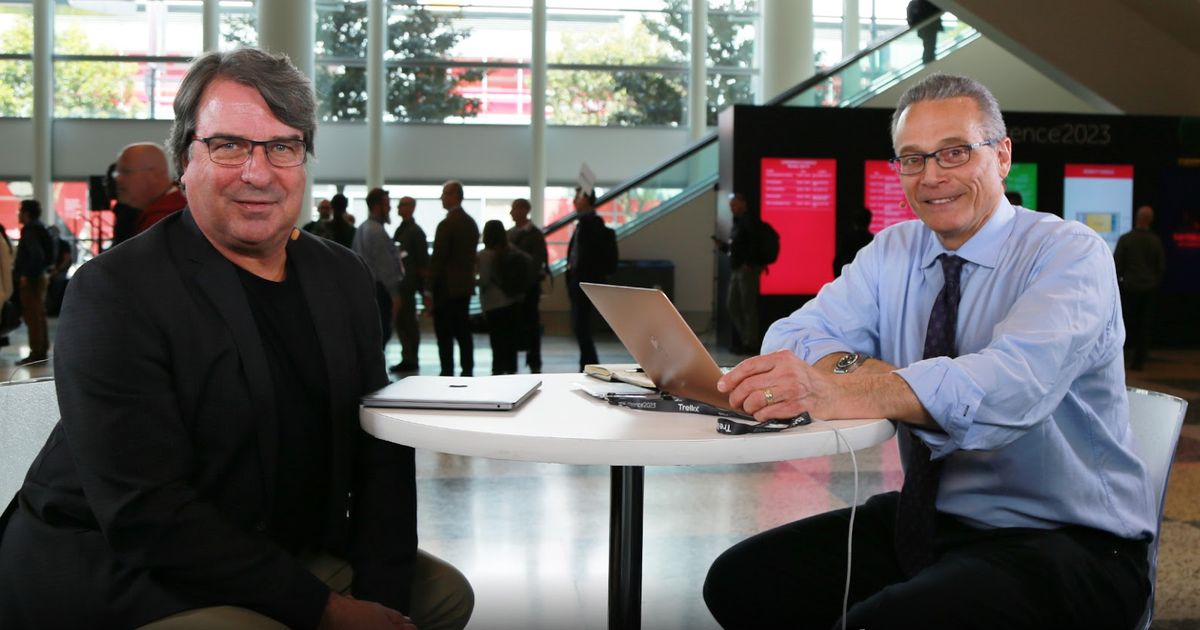 SECURITY
SECURITY
 SECURITY
SECURITY
 SECURITY
SECURITY
As the world of cybersecurity continues to evolve, industry leaders and analysts at RSA Conference 2023 gathered this week to discuss the challenges and changes in the market.
The premier cybersecurity event provides a stage for conversations around security as a cost center, platform development, cloud-native technology and the ongoing identity crisis in security.
“The big buzzword, zero trust, has gone from buzzword to actual serious strategic consideration,” said industry analyst Dave Vellante (pictured, right). “CISOs are serious about zero trust.”
This change in perspective is essential as the industry shifts toward a more preventative, runtime operational and risk management approach to cybersecurity.
Vellante and analyst John Furrier (left), previewed the RSA Conference day 1 keynote, during an exclusive broadcast on theCUBE, SiliconANGLE Media’s livestreaming studio. (* Disclosure below.)
The growing prevalence of multicloud environments has led to increased complexity in security policies and procedures. The responsibility of securing businesses now falls heavily on developers who have to navigate these complexities.
During the discussion, Furrier introduced the concept of “developer first” or “business to developer” as the new approach to security. Developers are now expected to code security into their products from the ground up, making security an integral part of the development process. However, the cloud-native, cloud-scale paradigm has yet to reveal a winning strategy.
“I have yet to see the winning hand,” he said.
Moreover, developers have a lot on their plate, and they’re being forced to take on security responsibilities, which can be overwhelming.
The role of artificial intelligence in cybersecurity is also a hot topic of discussion at this week’s conference. While some practitioners are hesitant to adopt AI due to its potential security risks, adversaries are leveraging AI technology to generate zero-day exploits and penetrate networks. The challenge lies in finding a balance between using AI for defense and recognizing its potential dangers. The industry also needs consolidation to reduce the number of security tools and suppliers in the market.
“The tool platform discussion means consolidation has to happen,” Furrier said. “You can’t have tools on a big platform without a platform.”
The market is ripe for a shift that streamlines and simplifies security solutions, but it remains to be seen who will emerge as the dominant player in this evolving landscape.
As the cybersecurity world continues to change, businesses, developers and security professionals must adapt to new strategies and technologies to stay ahead of the curve. As the industry moves toward a more proactive, preventative approach to security, the landscape will continue to evolve, offering both challenges and opportunities for all involved, theCUBE analysts concluded.
Here’s the complete video duscussuin, part of SiliconANGLE’s and theCUBE’s coverage of the RSA Conference:
(* Disclosure: This is an unsponsored editorial segment. However, theCUBE is a paid media partner for the RSA Conference. Sponsors of theCUBE’s event coverage do not have editorial control over content on theCUBE or SiliconANGLE.)
Support our mission to keep content open and free by engaging with theCUBE community. Join theCUBE’s Alumni Trust Network, where technology leaders connect, share intelligence and create opportunities.
Founded by tech visionaries John Furrier and Dave Vellante, SiliconANGLE Media has built a dynamic ecosystem of industry-leading digital media brands that reach 15+ million elite tech professionals. Our new proprietary theCUBE AI Video Cloud is breaking ground in audience interaction, leveraging theCUBEai.com neural network to help technology companies make data-driven decisions and stay at the forefront of industry conversations.